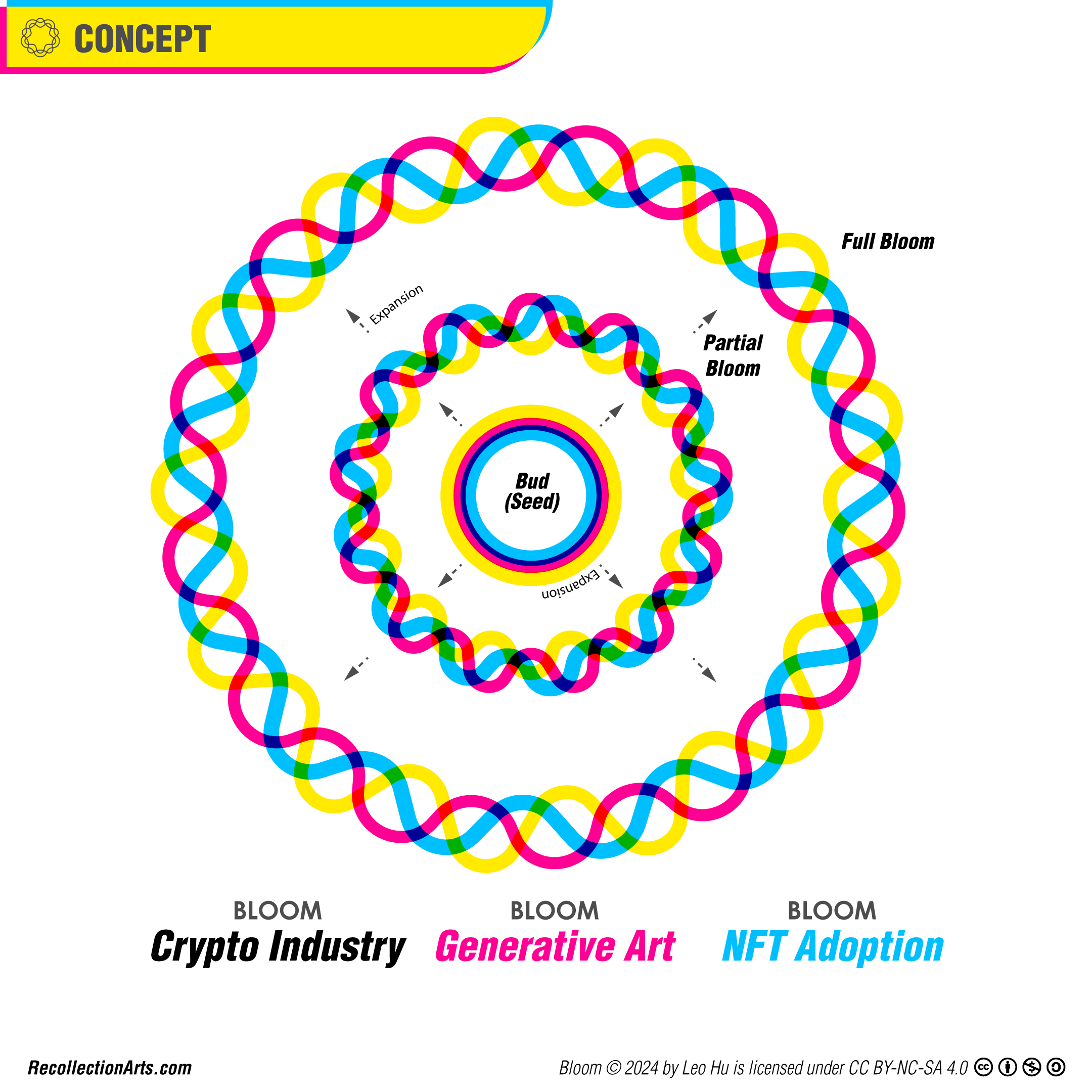NFT Gone Wrong?
During the previous crypto bull market from 2020, the rise of NFTs (non-fungible tokens) was truly remarkable. Notable generative art pieces like ‘Fidenza’ by Tyler Hobbs and ‘Chromie Squiggle’ by Erick Calderon, alongside profile picture (PFP) projects like Bored Ape Yacht Club (BAYC) and CryptoPunks, became symbols of the NFT boom, attracting a flood of new players who saw NFTs as a new form of trading and investment.
People aren’t satisfied with just owning a JPEG or GIF anymore; hence, what goes along with the NFTs are usually exclusive memberships to certain communities. However, for the majority of creators who aimed for quick money, projects were created without any real utility but were sold with promises, and eventually, many projects died. Investments didn’t gain value, and the ‘promised’ utility and long-term value from many NFT creators were not fulfilled, leading to widespread disappointment, and many left the NFT space disillusioned.
The NFT hype died down from late 2021, NFT sales volume dropped, and digital artists suffered as the art space became less vibrant. Unfortunately, this NFT bull run did not ingrain in people’s minds that NFTs represent a revolutionary concept of ownership and proof of authenticity for unique items or pieces of content, typically recorded on a blockchain. The uses and applications are limitless, including areas such as art and music ownership, intellectual property rights management, digital identity verification, and decentralized finance.
Can Generative Art NFTs Bloom Again?
Due to the high volatility of the crypto market, and NFTs being highly correlated to it, NFTs have found it difficult to establish themselves as stable assets that serve their real purpose. This dependence on the market’s ups and downs has led to fluctuations in value that deter long-term investment and practical use.
In the generative fine art industry, notable artists continue to perform well as people see the potential in buying art for long-term investment. This market operates similarly to how physical art is sold, with collectors valuing the uniqueness and authenticity that art NFTs can provide. Despite the broader market challenges, successful artists can still attract investors who appreciate the long-term value of their work.
So can NFTs bloom again? I don’t have an answer, but let us go back to asking ourselves some fundamental questions.
Why Would People Buy Your Art NFTs?
Budding generative artists need a strong value proposition, not only to create something they personally enjoy doing that gives them a unique identity, but also to ensure their work brings value to people’s lives. The fundamental question is: “Why would people buy your art NFTs?” Is it because your work shares the same philosophy, triggers emotional connections, reminds them of someone or something they love, or serves a functional aesthetic purpose? Just like why you would buy a physical painting that you would proudly display as a conversation starter in your house or office.
Generative art NFTs need to offer tangible value and enhanced interactive experiences that a piece of physical art can’t, to truly motivate buyers. Let us be honest, a JPEG file stays on the computer, and the token stays on the network. If we put investment value aside, it is worse off than a piece of physical art if it couldn’t function as a physical piece.
Standards for Future Generative Art
In my personal opinion, let me suggest a list of value-added standards for future generative art NFTs to adopt:
- Capability to Save in Different Resolutions : Generative art NFTs should be able to be produced in high resolution for printing. The portability advantage allows artwork to be printed anywhere.
- Capability to Save in SVG Format : To retain the quality of lines, especially if the file size is manageable.
- Instructions : Artists should provide a set of instructions on suggested paper types, print methods, thickness of borders, size of frames and artwork prints.
- Printing Services : It would be best if printing services were available directly from the artists to make owning the physical artwork easy.
- Art Series Title and Iteration Number : These should be shown on the art piece for ease of reference.
- Retrieval of Artist Narratives : Allowing access to the artist’s narratives about the artwork enhances its value and helps people appreciate the artwork more.
- Make Full Use of Features (fxhash) / Traits (Opensea) : It helps potential buyers find the piece they like without having to go through a sea of iterations. Moreover, it provides the added benefit of knowing how rare each piece is.
- Hide / Unhide Certain Elements : For example, provide options to toggle borders, project information, and background colors. This can be useful if you choose colored paper.
- Proper file naming: To capture information such as the hash, iteration number, file resolution and features.
- Suggested Use of the Artwork : Besides physical prints, you might find the artwork suitable for T-shirt prints, clock faces, or other interesting applications. Why not suggest it and illustrate it with mockups?
If the art NFTs come with animations, they should:
- Interact with Users via Keyboard or Click/Tap : For example, allow users to adjust the speed or toggle between day and night mode, etc.
- Enable Easy Sharing: Allow saving of the animation for ease of sharing via social media.
- Capture Different Views: Allow users to capture their favorite views of the animation.
- Suggested Use of the Artwork : Could it serve as an animated backdrop for a concert? Or be exhibited in large-scale immersive and interactive exhibitions?
I’ve demonstrated most of the above in my Bloom series, and I hope this will become a value-added standard, encouraging the adoption of these standards in future generative art series NFTs. Of course, feel free to think out-of-the-box to create value for the buyers!
Generative Art NFT Bloom!
I created BLOOM in this bear crypto market as it represents hope for the blooming of the crypto industry and the flourishing of NFT Arts. BLOOM aims to serve as a low-barrier entry for attracting more people and raising interest in generative art, thus helping the masses understand the limitless potentials of NFTs and appreciate the beauty of non-fungible token ownership. I would also want to encourage all generative artists to continue to enjoy the art creation process.
Most importantly, never devalue your work by underpricing it. Remember, your effort, creativity, and the unique value you bring to the NFT space are truly remarkable and deserve to be recognized and valued properly. Believe in the worth of your creations!
Bloom
BLOOM is an open edition ∞, free mint NFT series. Minting from 10 July 2024 at 13:00 (UTC). Mint as many as you like because the base gas fee is really affordable!
Please join me in Warpcast (client for Farcaster) and follow the channel /generativeartnft, to discuss more on generative art! Follow me on X: @LeoHuGArt or IG/ Farcaster: leohugart, and share your minted BLOOM and your thoughts and let NFT art reach a wider audience!
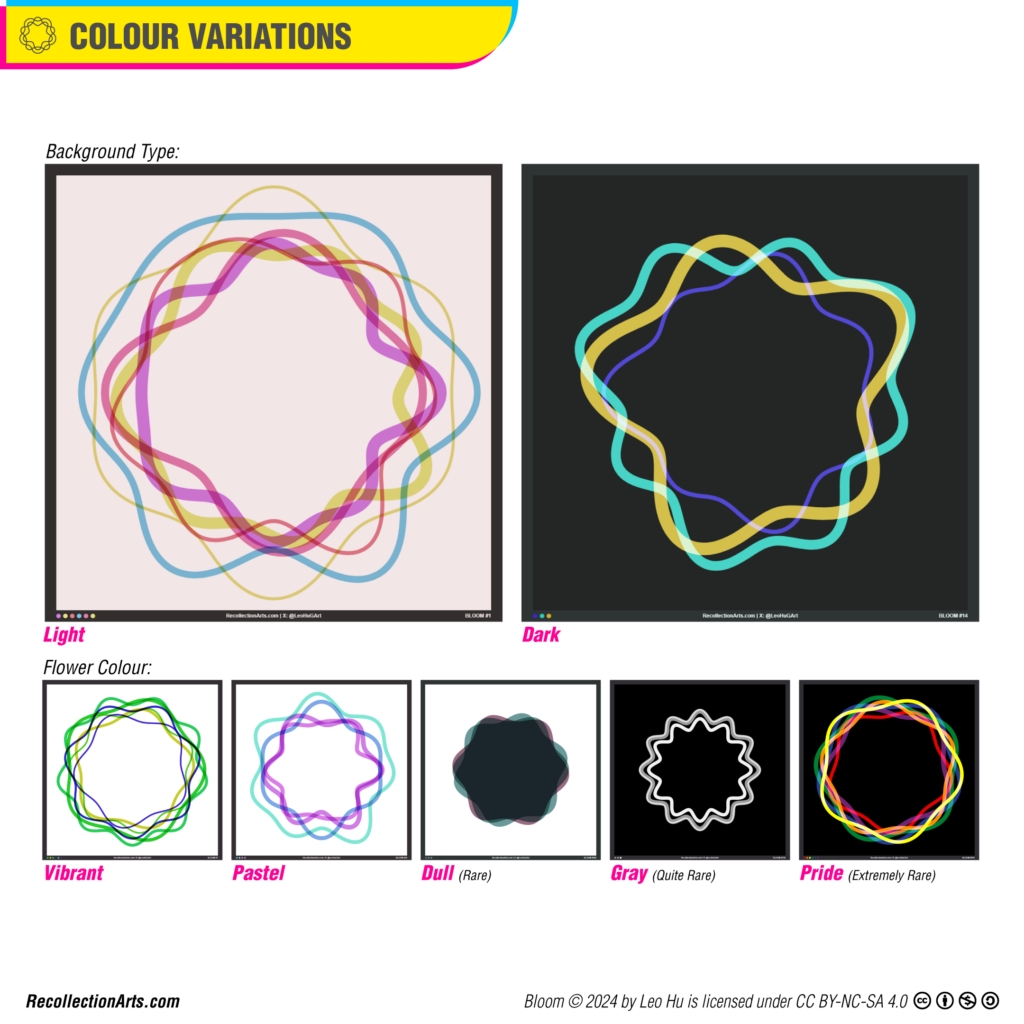
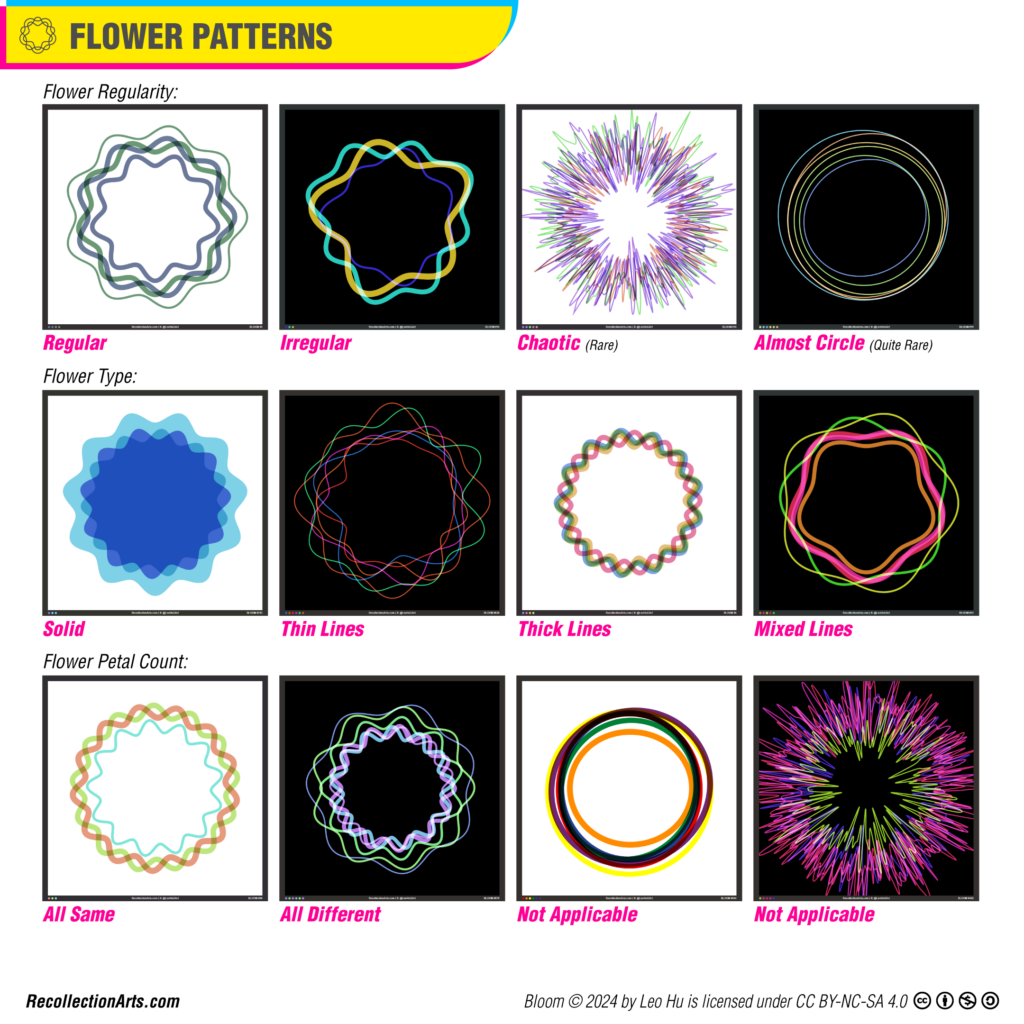
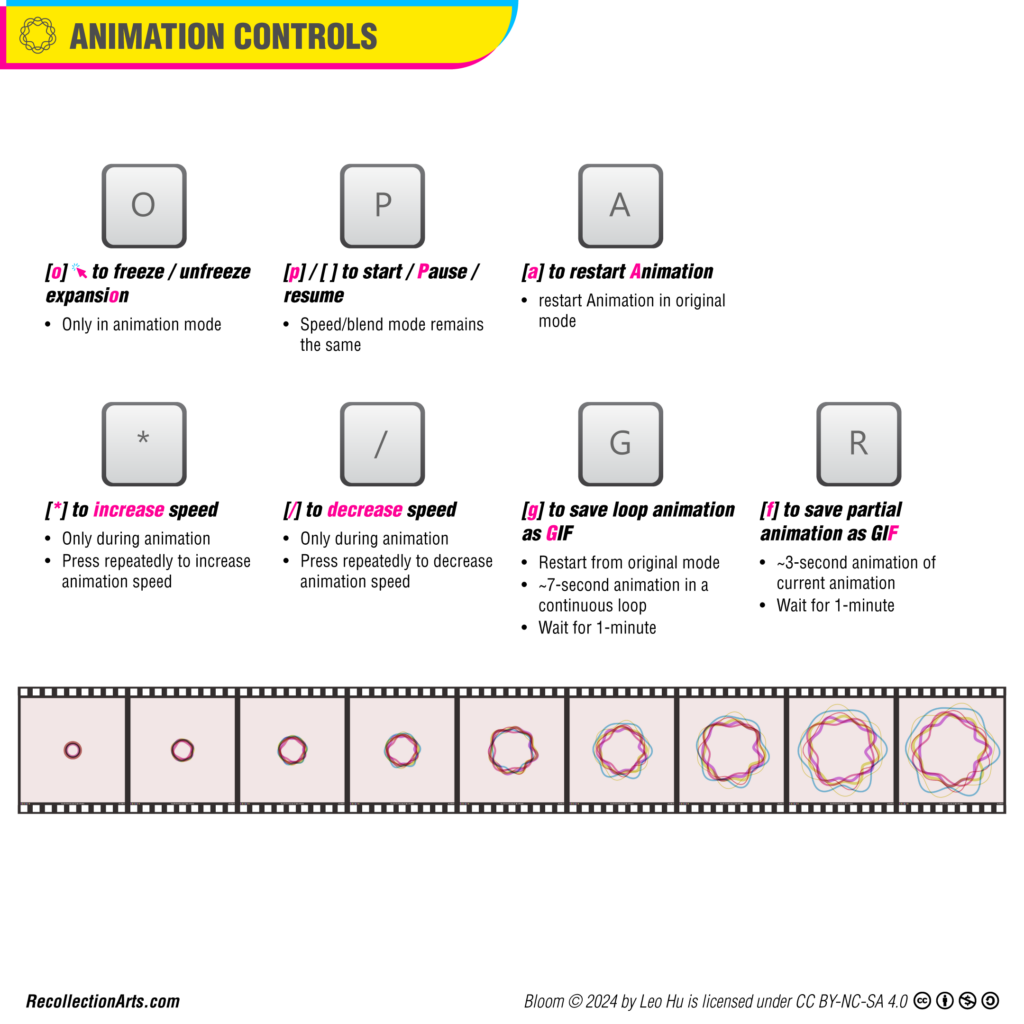
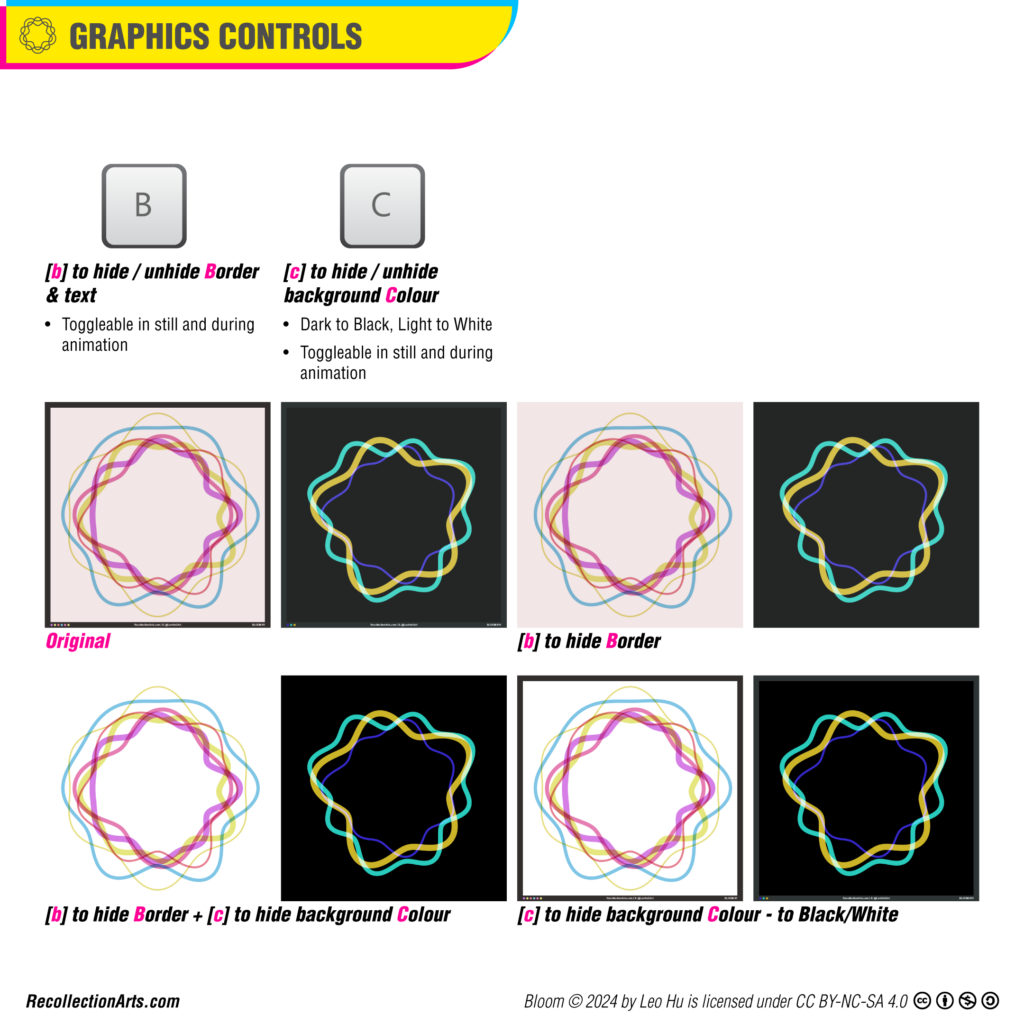
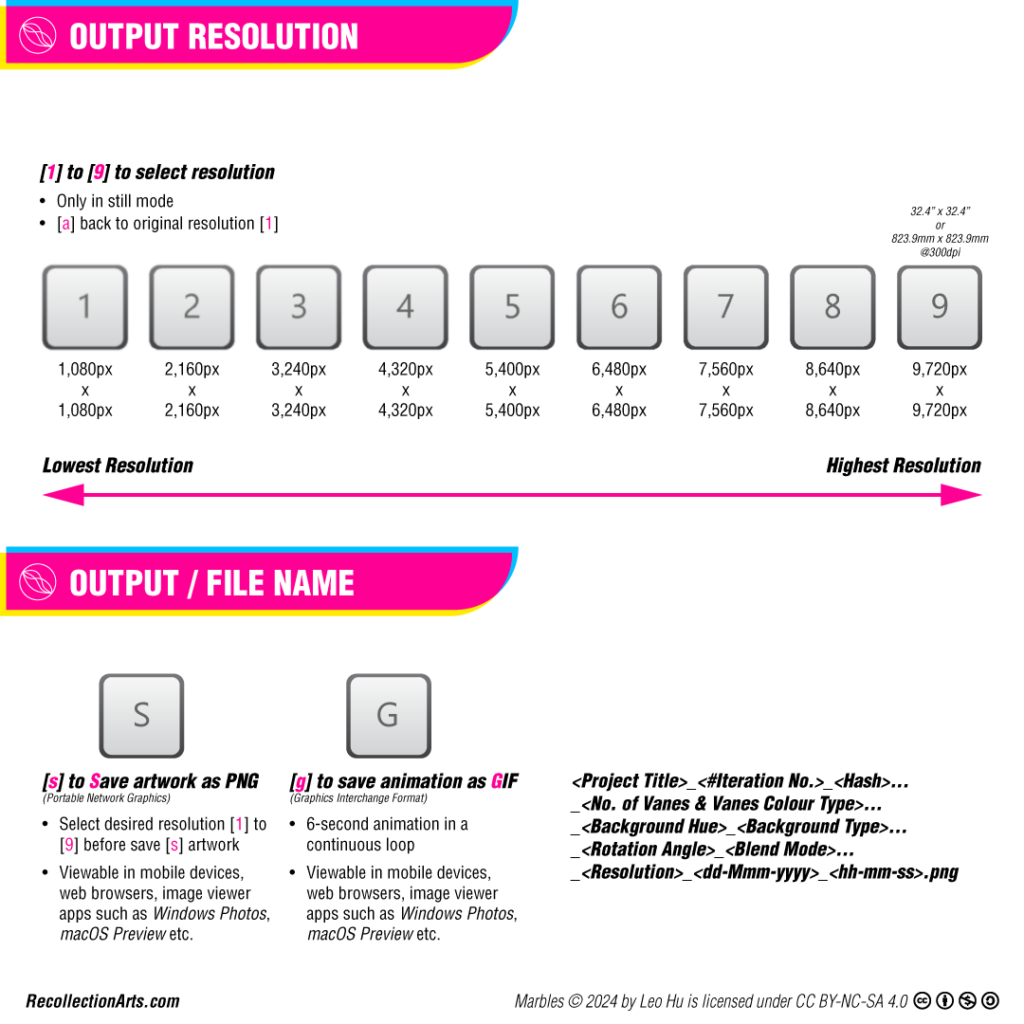
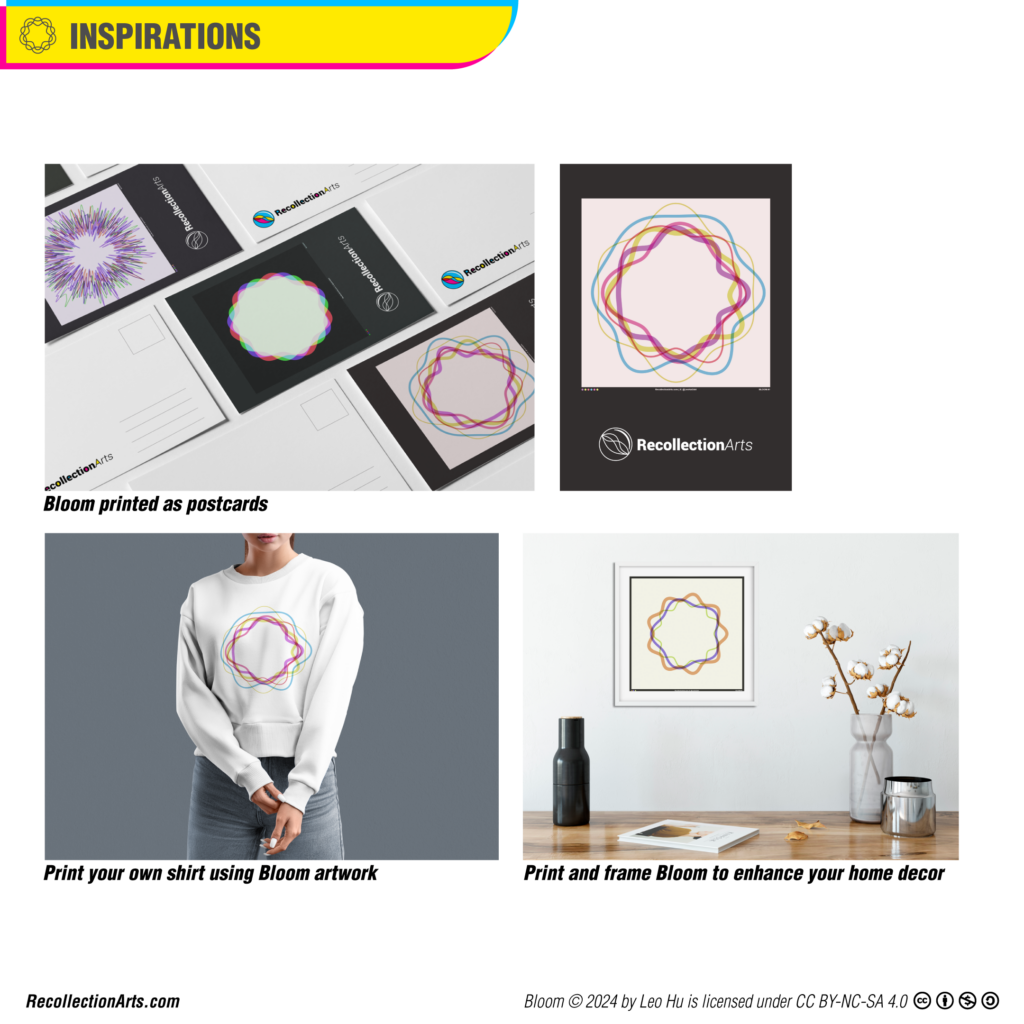
Animation Controls
[o] / [click]: freeze / unfreeze flower expansion (note color change of “BLOOM” text)
[p] / [space]: start / Pause / resume
[a]: start Animation in original mode
[*]: Increase the speed (during animation)
[/]: Decrease the speed (during animation)
[g]: save loop animation as GIF (wait for 1-minute)
[f]: save current animation as GIF (wait for 1-minute)
Graphics Controls
[b]: Hide / unhide Border & text
[c]: Hide / unhide background Color
[1] to [9]: select resolution (in still mode, [p] / [space] to Pause)
[s]: Save artwork as PNG (select resolution before save, default: 1)
First published on fx(hash)

